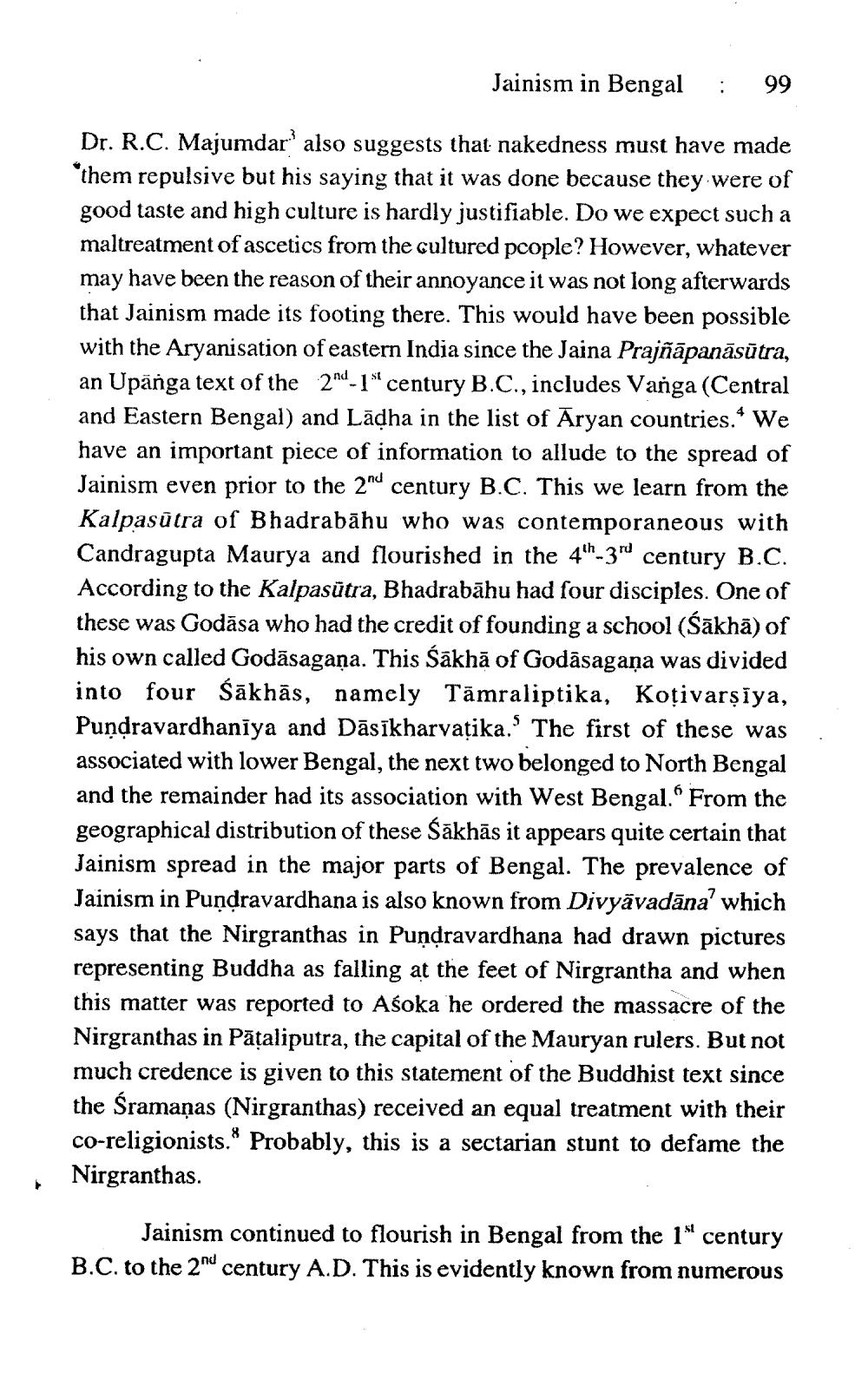________________
Jainism in Bengal
Dr. R.C. Majumdar also suggests that nakedness must have made *them repulsive but his saying that it was done because they were of good taste and high culture is hardly justifiable. Do we expect such a maltreatment of ascetics from the cultured people? However, whatever may have been the reason of their annoyance it was not long afterwards that Jainism made its footing there. This would have been possible with the Aryanisation of eastern India since the Jaina Prajñāpanāsūtra, an Upanga text of the 2nd-1 century B.C., includes Vanga (Central and Eastern Bengal) and Lāḍha in the list of Aryan countries. We have an important piece of information to allude to the spread of Jainism even prior to the 2nd century B.C. This we learn from the Kalpasūtra of Bhadrabahu who was contemporaneous with Candragupta Maurya and flourished in the 4th-3rd century B.C. According to the Kalpasütra, Bhadrabāhu had four disciples. One of these was Godāsa who had the credit of founding a school (Śākha) of his own called Godāsagaṇa. This Śākhā of Godāsagana was divided into four Śākhās, namely Tamraliptika, Kotivarṣiya, Pundravardhaniya and Dāsīkharvațika.' The first of these was associated with lower Bengal, the next two belonged to North Bengal and the remainder had its association with West Bengal." From the geographical distribution of these Śākhās it appears quite certain that Jainism spread in the major parts of Bengal. The prevalence of Jainism in Pundravardhana is also known from Divyāvadāna' which says that the Nirgranthas in Puṇḍravardhana had drawn pictures representing Buddha as falling at the feet of Nirgrantha and when this matter was reported to Aśoka he ordered the massacre of the Nirgranthas in Pataliputra, the capital of the Mauryan rulers. But not much credence is given to this statement of the Buddhist text since the Śramanas (Nirgranthas) received an equal treatment with their co-religionists. Probably, this is a sectarian stunt to defame the Nirgranthas.
: 99
Jainism continued to flourish in Bengal from the 1" century B.C. to the 2nd century A.D. This is evidently known from numerous




